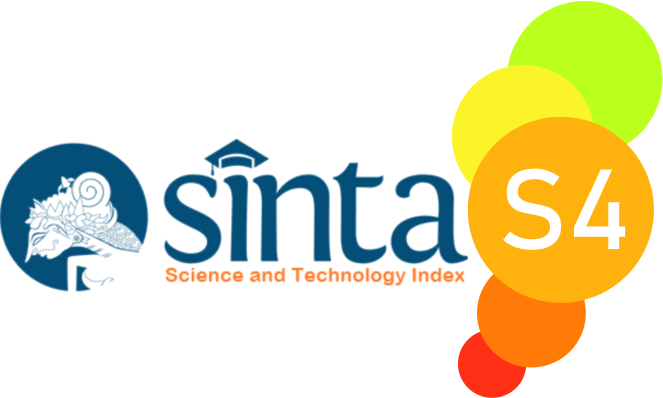The Use of QuillBot in Academic Writing
A Systematic Literature Review
Abstract
In recent years, QuillBot, an AI-powered writing assistance tool, has gained significant attention within the academic writing sphere due to its innovative features to enhance productivity and improve the quality of written content. This study, employing the systematic literature review method, aims to explore the use of QuillBot in academic writing. A total of seventeen research publications published between 2018 and 2024 were included in this study. These articles were gathered from reliable databases such as Google Scholar, Semantic Scholar, ResearchGate, Emerald Insight Journals, Springer, ScienceDirect, and Taylor & Francis. The findings discovered that, while users value its time-saving features, concerns regarding overreliance and potentially hindering critical skills development exist. QuillBot significantly enhances writing quality and efficiency by detecting errors, paraphrasing, and expanding vocabulary. It also addresses language barriers and plagiarism concerns. Additionally, its function as a complement to autonomous writing and critical thinking was highlighted, and caution against over-reliance was suggested. Therefore, further research is needed to examine its influence on academic performance, effectiveness across linguistic contexts, and function in writing instruction.
References
Amanda, A., Sukma, E. M., Lubis, N., & Dewi, U. (2023). Quillbot as an AI-powered English writing assistant: An alternative for students to write English. Jurnal Pendidikan dan Sastra Inggris, 3(2), 188-199. https://doi.org./10.55606/jupensi.v3i2.2026
Amyatun, R. L., & Kholis, A. (2023). Can artificial intelligence (AI) like QuillBot AI assist atudents’ writing skills? Assisting learning to write texts using AI. ELE Reviews: English Language Education Reviews, 3(2), 135-154. https://doi.org/10.22515/elereviews.v3i2.7533
Asmara, Y. V., & Kastuhandani, F. C. (2024). Students’ lived experience in utilizing Quillbot as an online paraphrasing tool in academic writing. Globish: An English-Indonesian Journal for English, Education, and Culture, 13(1), 56-65. http://dx.doi.org/10.31000/globish.v13i1
Baron, G., Lorenzo, C., & Benoît, D. (2023). Students’ perception on the use of Quillbot to improve grammar. Lingeduca: Journal of Language and Education Studies, 2(3), 250-265. https://doi.org/10.55849/lingeduca.v2i3.547
Chui, H. C. (2022). The QuillBot grammar checker: Friend or foe of ESL student writers? Journal of Creative Practices in Language Learning and Teaching (CPLT), 10(1), 10-31.
Fitria, T. N. (2022). Avoiding plagiarism of students’ scientific writing by using the QuillBot paraphraser. Elsya: Journal of English Language Studies, 4(3), 252-262. https://doi.org/10.31849/elsya.v4i3.9917
Ginting, P., Batubara, H. M., & Hasnah, Y. (2023). Artificial intelligence powered writing tools as adaptable aids for academic writing: Insight from EFL college learners in writing final project. International Journal of Multidisciplinary Research And Analysis, 6, 4640-50. https://doi.org/10.47191/ijmra/v6-i10-15
Hiếu, B. V., Huy, H. M., & Hằng, C. T. T. (2022). Employing the Quillbot application in order to sharpen paraphrasing skills in writing academic essays for English - majored students at the school of foreign languages - Thai Nguyen University. TNU Journal of Science and Technology, 227(13), 116–124.
Jaladara, A. R., Negeri, U., Muhammad, M., Jafar, B., & Salija, K. (2023). Quillbot web-application: Utilizing online technology on academic writing at an Indonesian Islamic higher education. Celebes Journal of Language Studies, 3(2), 275-284. https://doi.org/10.51629/cjls.v3i2.152
Kitchenham B., Charters S. (2007). Guidelines for performing systematic literature reviews in software engineering. Technical report EBSE 2007-001, Keele University and Durham University joint report.
Kurniati, E. Y., & Fithriani, R. (2022). Post-graduate students’ perceptions of Quillbot utilization in English academic writing class. Journal of English Language Teaching and Linguistics, 7(3), 437-451. https://doi.org/10.21462/jeltl.v7i3.852
Mohammad, T., Alzubi, A. A., Nazim, M., & Khan, S. I. (2023). EFL paraphrasing skills with QuillBot: Unveiling students’ enthusiasm and insights. Journal of Pedagogical Research, 7(5), 359-373. https://doi.org/10.33902/JPR.202324645
Mohd Nawi, N. S., & Muhmad Nor, N. A. A. (2023). The Challenges in the Teaching of English Literature. Journey: Journal of English Language and Pedagogy, 6(1), 130-147. https://doi.org/10.33503/journey.v6i1.2640
Nurmayanti, N., & Suryadi, S. (2023). The effectiveness of using Quillbot in improving writing for students of English education study program. Jurnal Teknologi Pendidikan: Jurnal Penelitian dan Pengembangan Pembelajaran, 8(1), 32-40. https://doi.org/10.33394/jtp.v8i1.6392
Rahmani, E. F. (2023). Undergraduate students ‘perceptions on Quillbot paraphrasing tool. Scripta: English Department Journal, 10(2), 182-190. https://doi.org/10.37729/scripta.v10i2.3674
Syahnaz, M., & Fithriani, R. (2023). Utilizing artificial intelligence-based paraphrasing tool in EFL writing class: A focus on Indonesian university students’ perceptions. Scope: Journal of English Language Teaching, 7(2), 210-218. https://doi.org/10.30998/scope.v7i2.14882
Wulandari, F., Astuti, M. T., & Marhamah, M. (2024). Enhancing writing literacy teachers’ through AI development. Jurnal Onoma: Pendidikan, Bahasa, dan Sastra, 10(1), 246-256. https://doi.org/10.30605/onoma.v10i1.3175
Xuyen, N. T. (2023). Using the online paraphrasing tool Quillbot to assist students in paraphrasing the source information: English-majored students’ perceptions. In Proceedings of the 5th Conference on Language Teaching and Learning (pp. 21-27). https://doi.org/10.21467/proceedings.150.3
Yustiana, R. A., Shofiya, A., & Iftanti, E. (2024). Artificial Intelligence in Education (AIEd): Utilization Frequencies in EFL Writing Class of Higher Education. In Proceedings of the 3rd International Conference On Islam, Law, and Society, 3(1).
Zulfa, S., Dewi, R. S., Hidayat, D. N., Hamid, F., & Defianty, M. (2023). The use of AI and technology tools in developing students’ English academic writing skills. In International Conference on Education (pp. 47-63).
Copyright (c) 2024 Siti Latifah, Abdul Muth'im, Nasrullah Nasrullah

This work is licensed under a Creative Commons Attribution-ShareAlike 4.0 International License.

Journey: Journal of English Language and Pedagogy by http://ejurnal.budiutomomalang.ac.id/index.php/journey/index is licensed under a Creative Commons Attribution-ShareAlike 4.0 International License.






